Everybody has a preferred sleeping posture that they automatically gravitate toward each night. Can one posture, though, be more healthful than the other? About 38% of people tend to sleep on their back, making it the second most common position to sleep in, after side sleeping.
Most commonly, neck and back pain occurs when an individual sleeps on their back, which causes stiffness and muscle pain often experienced upon waking up. This ache is because you put much pressure on the spine and tightened the neck muscles when you lay in this position.
However, one of the main advantages of sleeping on your back is that it is perfect for the spine's alignment, which helps with acid reflux and facial wrinkles. So, what can someone do to receive the most possible benefits from lying face-up? Here are some tips that may assist you if you’re among those who prefer sleeping in this position.
What is Back Sleeping and a Back Sleeper?
One of the best positions is back sleeping, which involves lying on one's back with the torso and face looking upward. Another name for this position is supine sleeping. Many individuals like to sleep on their backs because it is considered the most physiologically natural position for the body.
A person who spends most of his nighttime sleep lying on his back is a back sleeper. While some people intentionally prefer to sleep on their back every night, others may periodically switch positions and wind up on their back during the night.
Types of Back Sleeping Positions
While it may seem simple and harmless, back sleeping can affect your body and overall health. Let's get into the different types of back sleeping and how they work.
1. Starfish Position

The starfish position is where the arms are stretched out above the head, like a starfish. Furthermore, besides being suitable for individuals with acid reflux who need to keep their heads elevated, starfish posture also helps get the stomach acid into the esophagus. Nevertheless, this sleeping position can also cause pressure on the shoulders if not done correctly, leading to discomfort and numb arms.
2. Soldier Position
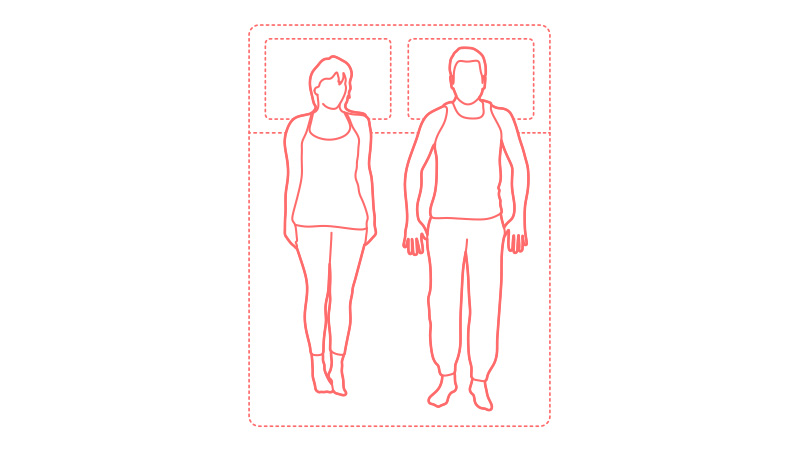
The soldier's position is when one sleeps on one's back with the arms down and the legs straight. This position provides the best lower back comfort and keeps the spine neutral, which can help you get rid of your back pain. However, it can also cause snoring and sleep apnea due to the flat position of the head and neck.
3. Starfish and Soldier Combination
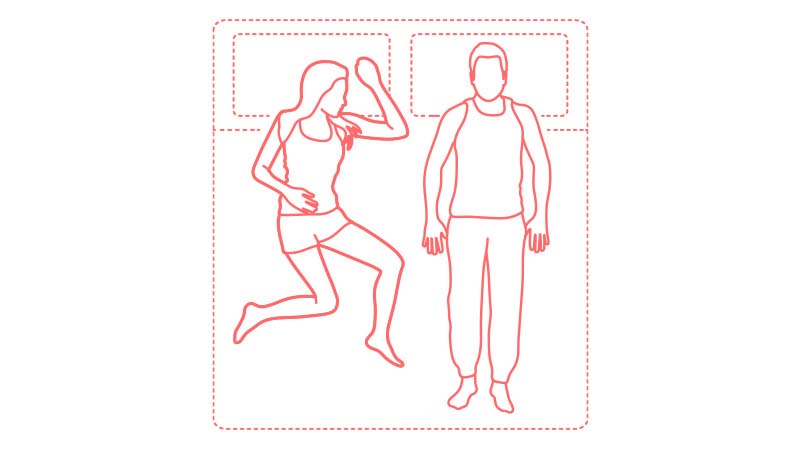
Some people are accustomed to the starfish and soldier positions during sleep and keep switching between them, usually referred to as a starfish and soldier combination. This position gives the benefits of both but the discomfort that you can feel in the arms and shoulders. It is still very nice.
4. Plank Position

The plank position is characterized by lying on one's back with the legs stretched out in a straight line. This sleeping posture might feel weird and complicated to fall asleep for some of us, but it could be one of the best ways to release back pain and keep wrinkles, as your face won’t touch the pillow. Of course, it could also lead to snoring and sleep apnea.
5. Stargazer Position
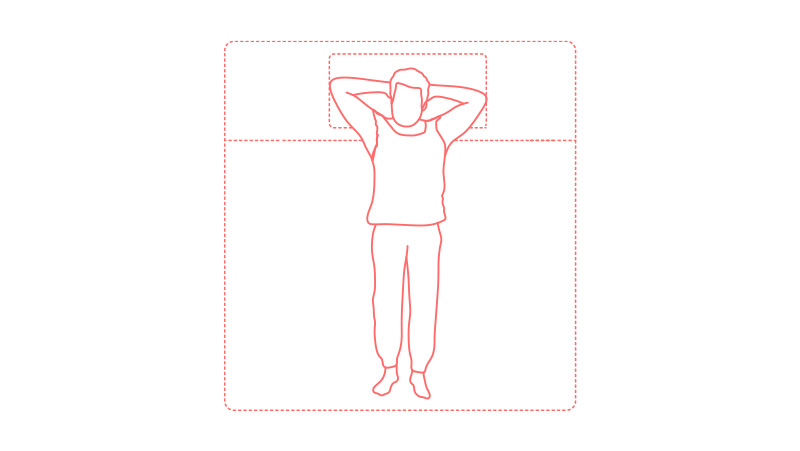
One way to sleep is to lie on your back with your arms bent and raised, sometimes crossed over your head or neck. This stance will remind you of observing the stars, which is why it is called Stargazer. The Stargazer is a prevalent sleeping position for runners and medical practitioners. It allows for the comfort of raised arms, giving relief and comfort during sleep.
Benefits of Back Sleeping
While many of us have our preferred sleeping position, research has shown that sleeping on our backs, the infamous supine position can benefit our bodies. Now, we will explore the benefits of back sleeping and why you should consider switching.
1. Aligns the Spine
One vital reason lying back is the best way to fall asleep is that it enables the spine to align in its designed way. Because we often lie on our backs or sides when we sleep, our spine is curved, and its alignment is affected, which seems unnatural and becomes problematic.
Conversely, resting on our backs allows the spine to be neutral, preventing pressure on the back muscles and reducing spasms or stiffness.
2. Reduces Acid Reflux
If someone suffers from acid reflux or heartburn back sleeping might not be a good option. The severity of acid reflux in back sleepers increases rapidly compared to other sleepers, which occurs because the acid is pulled back up the esophagus with the help of the gravitational pull.
Conversely, sleeping in a specific posture with the head in an upright position allows refluxing acid that arises from the stomach to stay away from the throat, which will reduce the acquired symptoms or avoid the situation.
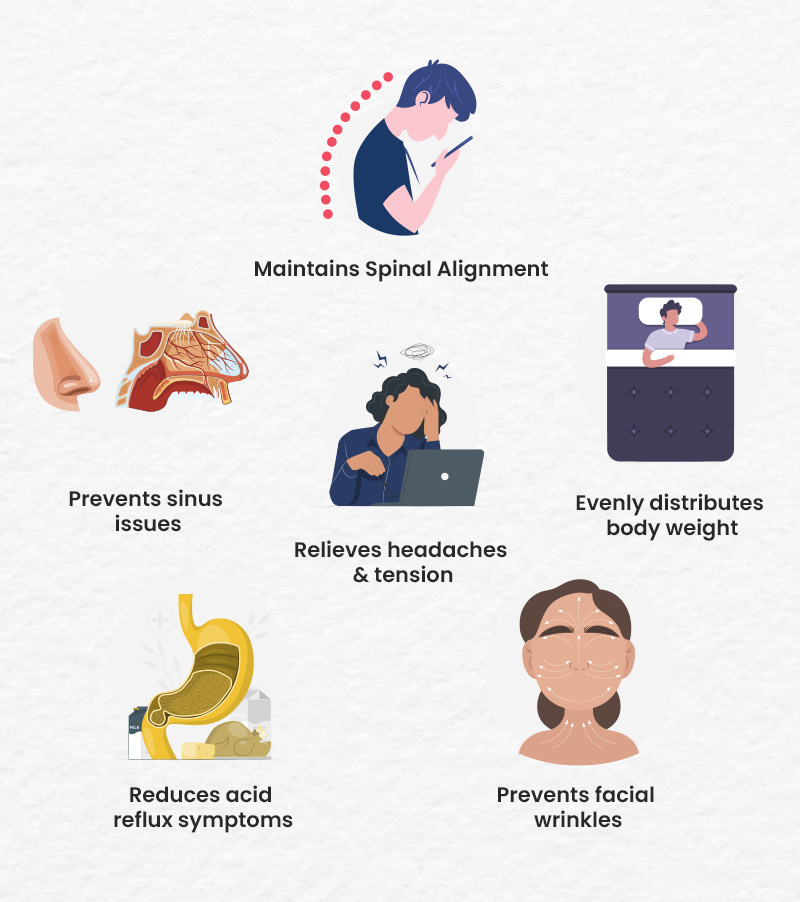
3. Prevents Wrinkles
Sleeping on our faces or sides can cause our skin to fold and make lines, eventually developing wrinkles. Facial wrinkles can occur more often when we sleep on our stomachs or sides simply because of the pressure we put on the skin.
When we sleep on our backs, however, our faces experience very little stress, and consequently, fewer wrinkles develop. Back sleeping can also be the key to sleep line depreciation, which is the hardest to cope with as we age.
4. Improves Breathing
Back sleeping can facilitate better breathing and is thus more effective for people with sleep apnea. When we sleep on our backs, some air can still pass through our airways even when we are not awake, which reduces snoring. Back sleeping helps alleviate allergies to pollen or the common cold and reduces your chance of a severe cold.
5. Comfortable During Pregnancy
Another significant benefit of this position is interrupted breathing and smooth blood circulation in pregnant women. Tilting the pelvis relieves pressure from all the affected joints, making the pregnancy journey a little relaxing for expectant mothers.
6. Improves brain health
Sleeping on your back ensures better spinal alignment and decreases the chances of obstructive sleep apnea encounters. This posture promotes a steady flow of cerebrospinal fluid to the brain, which is necessary for the removal of waste to support brain health.
Who Should Avoid Sleeping on their Back?
Sleeping on your back, which generally brings the best spine balance and reduces the pressure on the specific part of the body, is not guaranteed to be a position that is favorable to everyone. People who do not wish to go through health issues while sleeping find it helpful to sleep with their bellies and legs turned down or raise their heads.
1. People who Snore or have Sleep Apnea
Back sleeping can worsen snoring and obstructive sleep apnea, as the tongue and soft tissues slide down the throat and backward-block the air passages.
2. During Third Trimester
During the third trimester, you might experience a lot of pregnancy back pain. It can sometimes make back sleeping very uncomfortable because the uterus pressure exerted on the blood vessels may negatively impact the fetus's blood supply, which in extreme situations may cause dizziness or nausea to the mother.
3. People with Frequent Back Issues
Back sleeping might not be ideal for you if you have suffered back problems for a long time due to an injury or old age. It would help if you shifted to a back sleeping position.
4. Digestive Issues
Furthermore, if you have been a victim of digestive disorders such as acid reflux or other gastric diseases, back sleeping may tend to make the process worse. Back sleeping increases the pull of gravity on your stomach, which adheres to the acids in the esophagus. This induces the risks of digestion and heartburn and can also cause sleeping disorders.
5. Particular Neurological Conditions
"Conditions like Parkinson's disease or neuromuscular disorders can affect airway and muscle control so that people may experience difficulties sleeping on their backs," a retired army colonel from Closterman said.
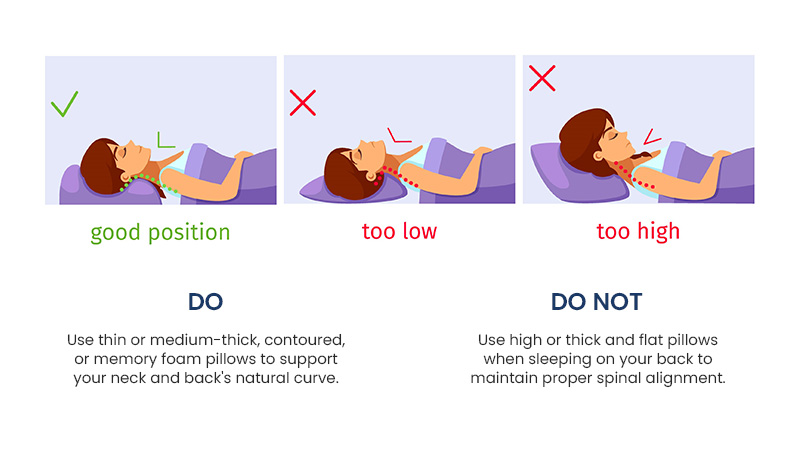
Tips for Healthy Back Sleeping
However, many people find this sleeping position awkward and impossible to maintain all night. How can you sleep on your back correctly?
Supportive Mattress and Pillow
The initial stages of healthy back sleeping involve a suitable mattress and the ideal pillow for back sleepers. An excellent mattress maintains the spine naturally, while the best pillow for back sleepers keeps the head, neck, and shoulders neutral.
Use a Pillow Under Your Knees
The best pillow to relieve back pain is positioned under your knees sideways. This ensures proper spinal alignment and reduces lower back strain. This is an incredible hack, particularly for individuals with sciatica or looking for the best pillow for side and back sleepers.
Practice Relaxation Techniques
Relaxation methods, such as deep breathing, can counteract the tightness of muscles and guarantee a natural body posture while sleeping, making changing sleeping positions effortless.
Use a Body Pillow
Whether you've generally been sleeping on one of your sides or have occasional insomnia, the best body pillow for back pain is the one that gives you the maximum support, thus helping you stop rolling over. Placing it in a manner that adequately supports either your back or your knees and makes you comfortable during the night is very important.
Elevate Your Head
If you prop your head, your congestion or reflux will be at bay, and back sleeping will be more comfortable. Set your best pillow for back pain until you determine the ideal position for the pain to begin to subside.
No Eating Right before Sleeping
Resting on your back may sometimes cause severe acid reflux. Nevertheless, you can decrease the likelihood of this condition by refraining from eating fatty, spicy, or acidic foods before bed. It will also help if you avoid taking large meals as well as caffeine and alcohol close to bedtime.
Try Different Positions
To get the perfect position, experiment with various ones using a top-rated pillow for back sleepers. Keep your arms straight down at your sides and switch positions slightly until it feels right. If you find that side sleeping feels more natural or helps reduce pressure on your shoulders, consider using a side sleeper pillow for better neck and spinal alignment.
Be Patient
It may take a while to get comfortable with a new sleeping position, like using a pillow for back problems. Stick to your routine if you roll onto your side at night and gently readjust. Have patience and try lying on your back more often for sleep and better spinal health.
Final Thoughts
Not everyone can sleep on their back, but it is still good to do so. This position helps keep the spine straight, reducing acid reflux. It also stops creases from appearing on the face and makes it easier for a person to breathe well during sleep. However, if you snore or suffer from sleep apnea, among other medical conditions, this may not be the best choice for you.
For better results when sleeping on your back, ensure that the mattress and pillow you use are comfortable in supporting this posture. You can employ relaxation techniques or additional pillows, such as a body pillow or the one placed under your knees. Raising your head may also work.
Shifting to back sleeping requires some self-compassion for your body to adjust and sleep well. Back sleeping may help your overall health when you do it in combination with these recommendations until you get used to it.





















